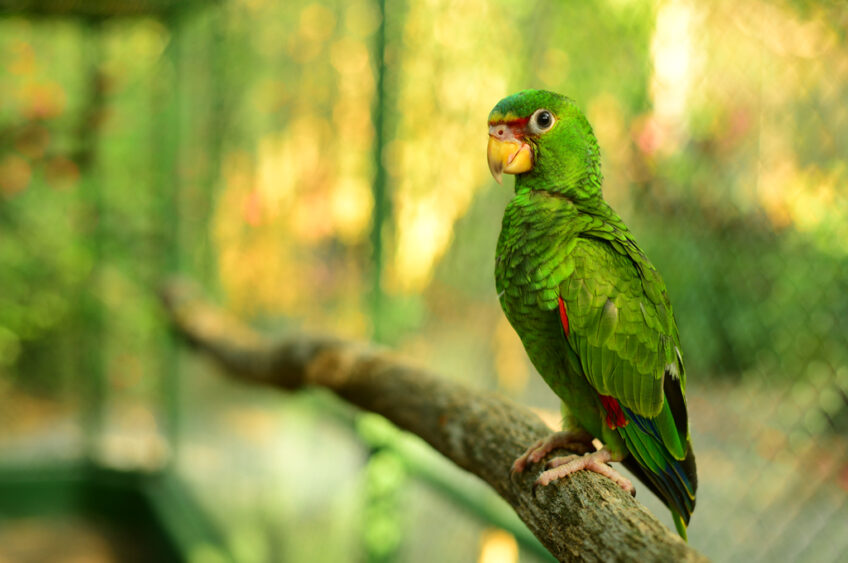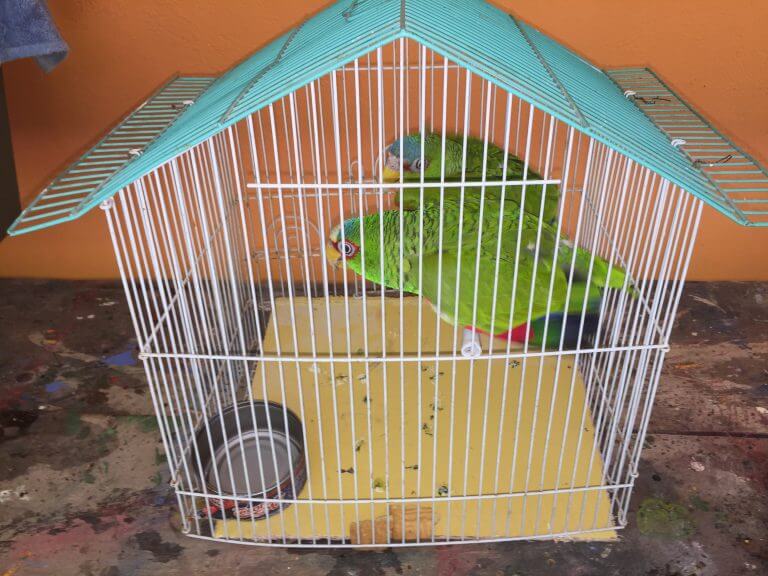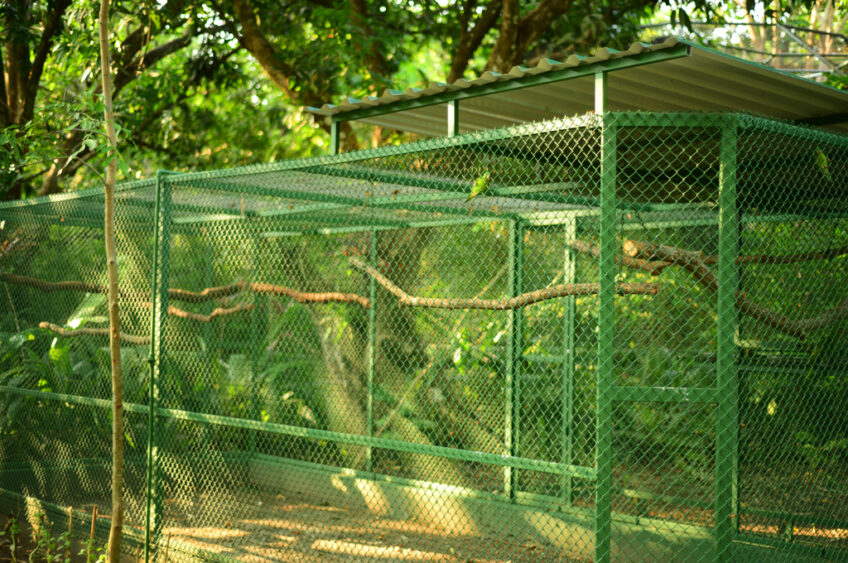White-Fronted Amazon
White-Fronted Amazon
Family: Psittacidae
Species: Amazona albifrons
Distribution: From southern Mexico to northwestern Costa Rica. It inhabits tropical dry forests, agricultural areas, and forest edges where fruiting trees are abundant.

Introduction
The white-fronted amazon Costa Rica, also known locally as the cancan parrot or white-fronted parrot, is one of the most charismatic and recognizable bird species in the country. Its intelligence, curiosity, and vibrant plumage make it a true icon of tropical wildlife.
Unfortunately, this species has been heavily affected by the illegal wildlife trade. Many individuals have been captured from the wild and kept as pets, which has significantly reduced their natural populations.
The talkative parrot of the dry forest
The white-fronted amazon is famous for its social behavior and remarkable vocal skills. These parrots are very expressive, capable of mimicking sounds and communicating with their flock through loud calls.
In the skies of Costa Rica, groups of cancan parrots can be seen flying over dry forests and farmland in search of food and safe resting places. Their presence is a clear indicator of a healthy ecosystem, even though they sometimes come into conflict with humans when they feed on crops.
Ecological role
Seed and fruit disperser: plays a vital role in the regeneration of tropical dry forests.
Environmental indicator: its presence reflects the availability of natural resources such as food and nesting sites.
Social connector: flocks help maintain plant diversity by spreading seeds over large areas.
Ecological balance: serves as prey for raptors and contributes to the natural food chain.
Characteristics and sexual dimorphism
Appearance: bright green plumage with a distinctive white forehead and bluish tones on the crown.
Sexual dimorphism: males display an intense red mask and bold red markings on their wings, while females have lighter or faint red tones.
Size: between 23 and 25 cm in length.
Diet: seeds, fruits, flowers, and grains, including pejibaye palm fruit and maize.
Reproduction: they nest in tree cavities and in the bases of royal palms (Attalea rostrata), using the natural hollows formed where the large leaves attach to the trunk.
History of the white-fronted amazon at Natuwa
At the Natuwa Wildlife Sanctuary, six individuals of Amazona albifrons, commonly known as white-fronted amazons or cancan parrots, currently live in protected care. All were confiscated by SINAC authorities after falling victim to the illegal wildlife trade.
These parrots were born in the wild, high in the trees of Costa Rica’s dry forests, but were taken from their nests by people who climb or cut branches to steal chicks and sell them as pets. Most grew up alone, confined in small cages, often with poor diets and no veterinary attention.
At Natuwa, these cancan parrots have found a safe refuge where they live with dignity, space, and companionship. Large enclosures, a balanced diet, and environmental enrichment programs allow them to regain natural behaviors such as flying, climbing, exploring, and communicating with one another.
They now live in social groups, which provides several important benefits:
Constant interaction, improving their emotional well-being.
Mutual learning, as they imitate and observe the natural behaviors of others.
Reduced stress and loneliness, by forming social bonds similar to those found in wild flocks.
Increased physical activity, through play, exploration, and flight within the enclosure.
Today, these six parrots are ambassadors for their species, helping educate Natuwa’s visitors about the importance of respecting wildlife and rejecting the illegal animal trade. Their story represents a second chance — a life of freedom within a protected space, where they can once again express their true nature.

Enrichment and welfare at the sanctuary
To ensure their physical and emotional well-being, the white-fronted amazons at Natuwa participate in daily environmental enrichment programs designed to stimulate their minds and natural instincts:
Foraging activities with tropical fruits such as pejibaye, mangoes, and guavas.
Natural branches and perches for climbing and exploring.
Social interaction within small groups encourages communication and bonding.
Wooden nesting boxes simulating palm cavities, offering safe and familiar nesting options.
These activities help keep the parrots active, curious, and engaged, while educating visitors about the complex needs of wild birds in captivity.

Coexistence with humans
In some rural areas of Costa Rica, white-fronted amazons are known to feed on maize or orange crops, occasionally creating minor conflicts with farmers. However, most local producers understand that this behavior is a direct result of habitat loss, mainly caused by large-scale deforestation and pineapple monocultures that destroy the natural forests where these parrots once found their food.
In Costa Rica, keeping a parrot like the white-fronted amazon as a pet is illegal, and those found in captivity without authorization can lead to fines of up to three base salaries and criminal charges.
Conclusion
The white-fronted amazon Costa Rica is more than just a colorful and talkative bird — it is a symbol of resilience, hope, and the urgent need to protect wildlife. At Natuwa Wildlife Sanctuary, each rescued parrot represents a life saved and a powerful message of education and conservation.
By visiting Natuwa, you not only witness the beauty of these extraordinary parrots but also become part of the movement that defends the freedom and dignity of all wild animals.